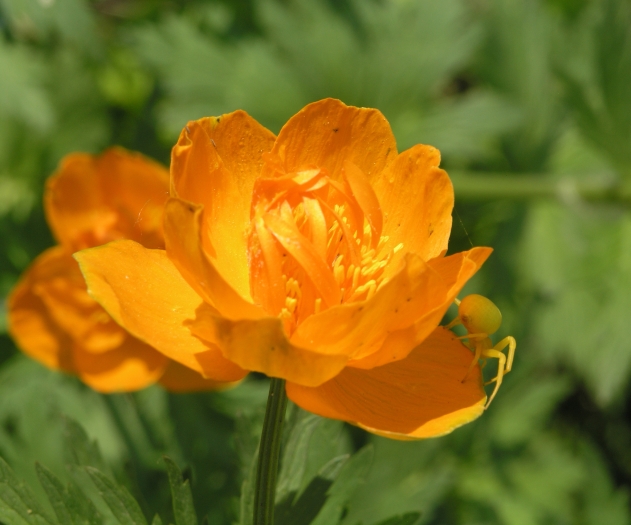Asian Globeflower
(Trollius asiaticus)
Asian Globeflower (Trollius asiaticus)
/
/

Oleg Kosterin
CC BY 4.0
Image By:
Oleg Kosterin
Recorded By:
Copyright:
CC BY 4.0
Copyright Notice:
Photo by: Oleg Kosterin | License Type: CC BY 4.0 | License URL: http://creativecommons.org/licenses/by/4.0/ | Rights Holder: Oleg Kosterin | Publisher: iNaturalist | Date Created: 2020-05-19T18:00:05-07:00 |

























Estimated Native Range
Summary
Trollius asiaticus, commonly known as Asian globeflower, is a perennial herb that is native to damp meadows, wet grasslands, and the edges of deciduous forests in Asia and Europe, particularly in regions with cool summers. It typically grows to a height of 8 inches or taller, with a similar spread. The plant features deeply divided, dark green leaves and produces bright yellow, globe-shaped flowers that bloom in late spring to early summer. The flowers are quite showy and can add a splash of color to garden settings.
Asian globeflower is valued for its unique, spherical flowers and its ability to thrive in moist, shady conditions, making it a suitable choice for woodland gardens, waterside plantings, and as part of a perennial border. It prefers consistently moist soil, rich in organic matter, and can tolerate partial shade to full sun, though it benefits from some afternoon shade in hotter climates. While generally low-maintenance, it may require division every few years to maintain vigor. Trollius asiaticus is not commonly associated with serious diseases or pests, but it can suffer from root rot if planted in poorly drained soils. It is not known to be invasive and does not typically present problems with aggressive roots or invasiveness when grown outside its native range.CC BY-SA 4.0
Asian globeflower is valued for its unique, spherical flowers and its ability to thrive in moist, shady conditions, making it a suitable choice for woodland gardens, waterside plantings, and as part of a perennial border. It prefers consistently moist soil, rich in organic matter, and can tolerate partial shade to full sun, though it benefits from some afternoon shade in hotter climates. While generally low-maintenance, it may require division every few years to maintain vigor. Trollius asiaticus is not commonly associated with serious diseases or pests, but it can suffer from root rot if planted in poorly drained soils. It is not known to be invasive and does not typically present problems with aggressive roots or invasiveness when grown outside its native range.CC BY-SA 4.0
Plant Description
- Plant Type: Herb
- Height: 0.25-1.75 feet
- Width: 0.25-1.75 feet
- Growth Rate: Moderate
- Flower Color: Yellow, Orange
- Flowering Season: Spring, Summer
- Leaf Retention: Deciduous
Growth Requirements
- Sun: Full Sun, Part Shade
- Water: Medium
- Drainage: Medium
Common Uses
Border Plant, Butterfly Garden, Low Maintenance, Water Garden
Natural Habitat
Damp meadows, wet grasslands, and edges of deciduous forests in Asia and Europe, particularly in regions with cool summers
Other Names
Common Names: Siberian Globe Flower
Scientific Names: , Trollius asiaticus, Ranunculus asiaticus, Trollius africanus, Trollius arieticus, Trollius asiaticus subsp. affinis, Trollius asiaticus subsp. affinis, Trollius asiaticus var. parviflorus, Trollius bargusinensis, Trollius dahuricus
GBIF Accepted Name: